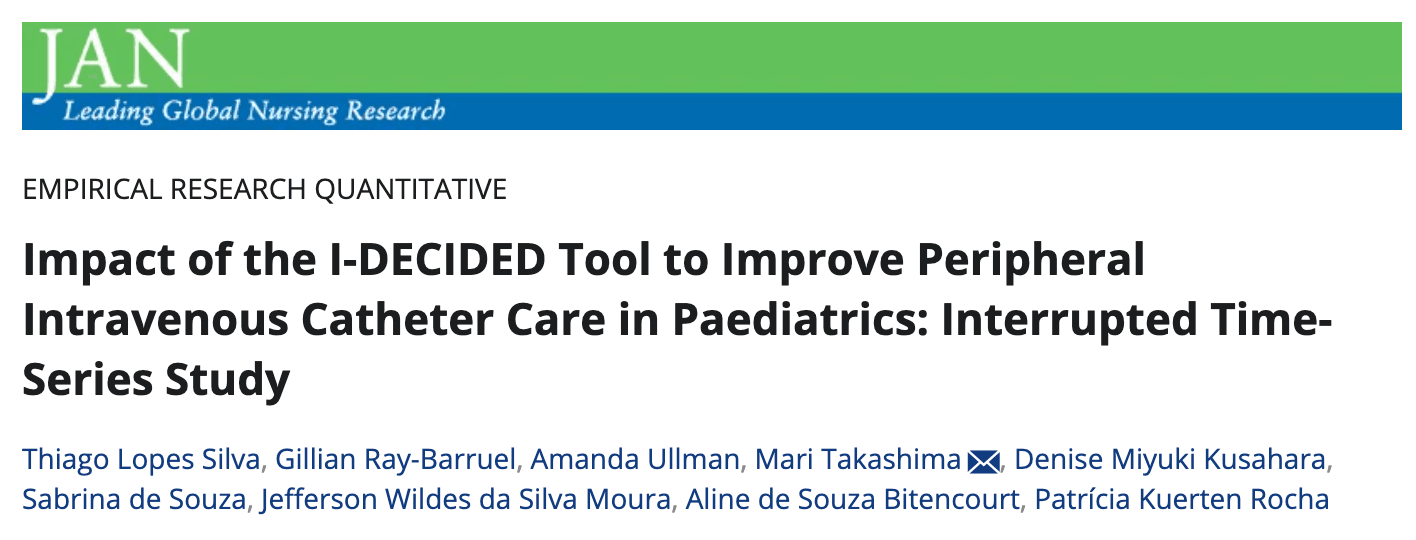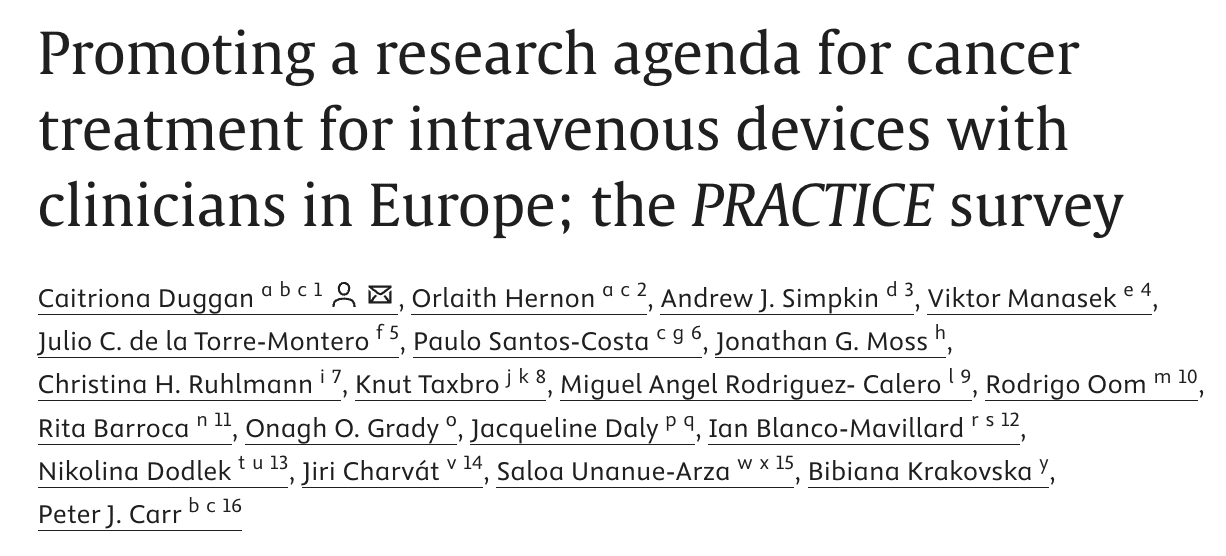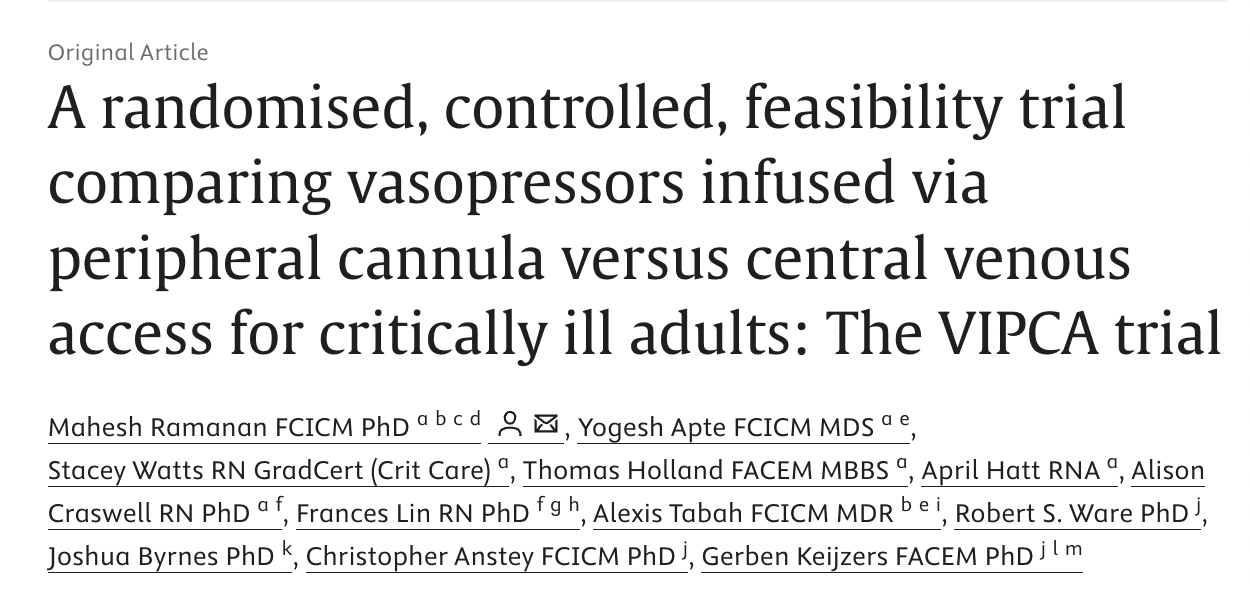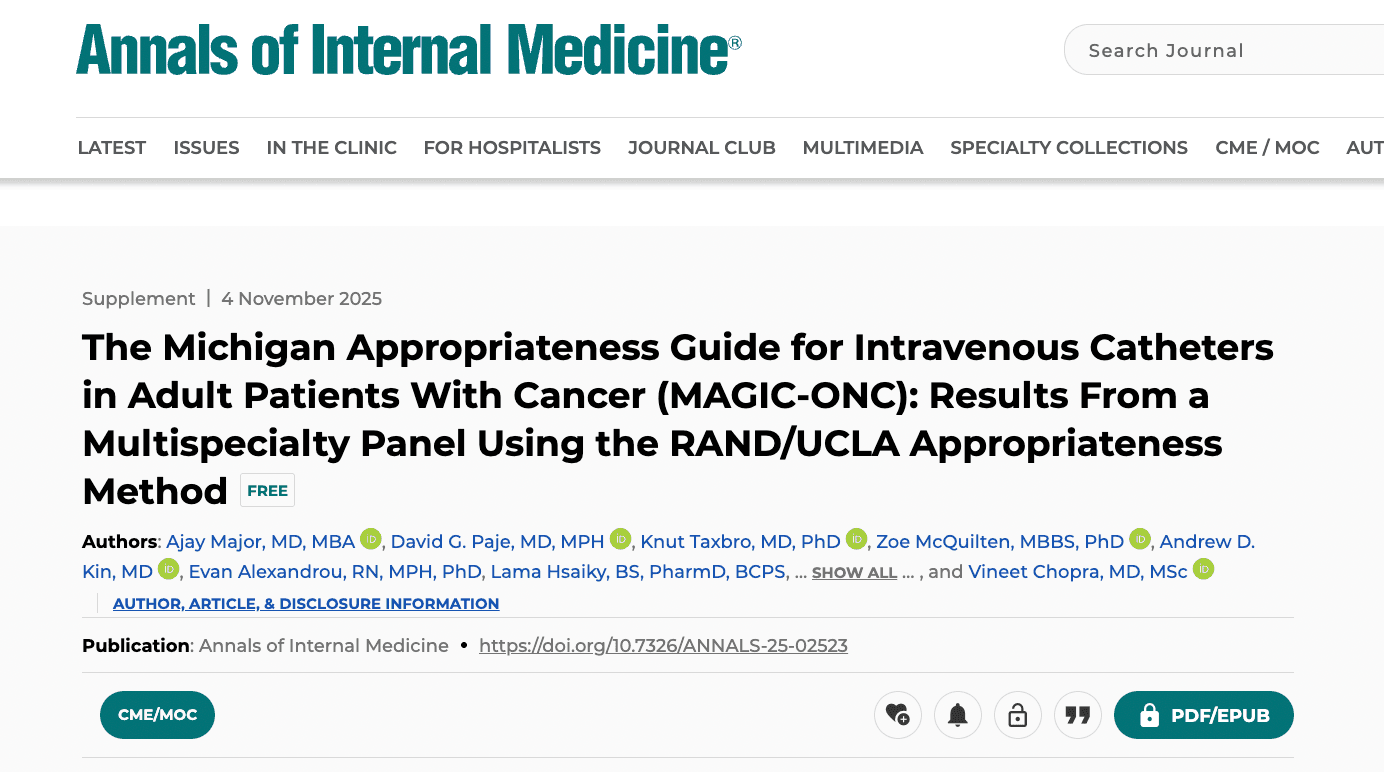Mapping the Risk: Causal Model for Central Line Infections
Posted
on 17 December 2025
)
Study Overview
Central venous catheters (CVCs) are critical in long-term medical care, but they carry a significant risk of central line-associated bloodstream infections (CLABSIs). This study used expert-driven methods to build a causal model—known as a directed acyclic graph (DAG)—to identify key patient and catheter factors contributing to CLABSI. The model is designed to inform future clinical trials and help define more targeted, realistic prevention strategies.Key FindingsDual Risk...
Central venous catheters (CVCs) are critical in long-term medical care, but they carry a significant risk of central line-associated bloodstream infections (CLABSIs). This study used expert-driven methods to build a causal model—known as a directed acyclic graph (DAG)—to identify key patient and catheter factors contributing to CLABSI. The model is designed to inform future clinical trials and help define more targeted, realistic prevention strategies.Key FindingsDual Risk...
Improving Paediatric IV Care with the I-DECIDED Tool
Posted
on 10 December 2025
)
Study Overview
This interrupted time-series study evaluated the effectiveness of the I-DECIDED assessment and decision tool in improving peripheral intravenous catheter (PIVC) care for paediatric patients in a Brazilian public hospital. The tool aims to guide nurses through structured, evidence-based decisions during catheter care.Key FindingsReduced Complications: The implementation led to fewer idle PIVCs, substandard dressings, and complications post-intervention.Increased Engagement: Fam...
This interrupted time-series study evaluated the effectiveness of the I-DECIDED assessment and decision tool in improving peripheral intravenous catheter (PIVC) care for paediatric patients in a Brazilian public hospital. The tool aims to guide nurses through structured, evidence-based decisions during catheter care.Key FindingsReduced Complications: The implementation led to fewer idle PIVCs, substandard dressings, and complications post-intervention.Increased Engagement: Fam...
Higher Degree by Research with AVATAR
Posted
on 9 December 2025
Submit an EOI todayReal research. Real clinical impact.Interested in a Higher Degree Research (HDR) project that actually changes clinical practice?
At AVATAR (Alliance for Vascular Access Teaching and Research), you can work on real-world problems in vascular access and infusion therapy, guided by experienced supervisors across universities and specialties.Why HDR with AVATAR?Every year, millions of IV devices are inserted worldwide — and 25–36% fail after insertion. These failures caus...
At AVATAR (Alliance for Vascular Access Teaching and Research), you can work on real-world problems in vascular access and infusion therapy, guided by experienced supervisors across universities and specialties.Why HDR with AVATAR?Every year, millions of IV devices are inserted worldwide — and 25–36% fail after insertion. These failures caus...
Effectiveness of Virtual Reality on Pain During PIVC Insertion in the Emergency Room
Posted
on 3 December 2025
)
Study Overview
This randomized clinical trial assessed whether virtual reality (VR) could reduce pain and procedure-related distress in children undergoing peripheral intravenous catheter (PIVC) insertion in emergency departments. Children aged 4 to 14 years were randomly assigned to receive either standard care or VR distraction using a calming ocean film during the procedure.Key FindingsPain Reduction: Children who used VR experienced significantly less pain compared to the control group (...
This randomized clinical trial assessed whether virtual reality (VR) could reduce pain and procedure-related distress in children undergoing peripheral intravenous catheter (PIVC) insertion in emergency departments. Children aged 4 to 14 years were randomly assigned to receive either standard care or VR distraction using a calming ocean film during the procedure.Key FindingsPain Reduction: Children who used VR experienced significantly less pain compared to the control group (...
Promoting Safer Cancer Care: What the PRACTICE Survey Reveals About VAD Use Across Europe
Posted
on 26 November 2025
)
Study Overview
The PRACTICE survey—Promoting a Research Agenda for Cancer Treatment for Intravenous Devices with Clinicians in Europe—explored how vascular access devices (VADs) are used to deliver systemic anti-cancer therapy (SACT) across 18 European countries. Conducted between May and October 2024, this cross-sectional survey aimed to uncover gaps in clinician decision-making, training, and complication management for VADs.Over 400 healthcare professionals participated, including onc...
The PRACTICE survey—Promoting a Research Agenda for Cancer Treatment for Intravenous Devices with Clinicians in Europe—explored how vascular access devices (VADs) are used to deliver systemic anti-cancer therapy (SACT) across 18 European countries. Conducted between May and October 2024, this cross-sectional survey aimed to uncover gaps in clinician decision-making, training, and complication management for VADs.Over 400 healthcare professionals participated, including onc...
Peripheral vs Central Access for Vasopressors: What Did the VIPCA Trial Find?
Posted
on 19 November 2025
)
Study OverviewThe VIPCA trial (Vasopressor Infusion via Peripheral Cannula vs Central Access) was a single-centre, randomised, controlled feasibility study conducted in a Queensland ICU. Forty critically ill adult patients requiring vasopressor infusions were randomised to receive either:Early CVC insertion (within 4 hours), orDelayed CVC insertion (after 12 hours), with initial infusion via a peripheral IV cannula (PIVC).The aim was to determine whether a larger, definitive trial comparing t...
The Michigan Appropriateness Guide for IV Catheters in Adult Cancer (MAGIC-ONC) — Guideline Snapshot
Posted
on 14 November 2025
)
Study OverviewSafe venous access underpins cancer care, yet device choice (PIV, midline, PICC, tunneled CVC, port) can alter risks of CLABSI and VTE. MAGIC-ONC provides consensus, evidence-informed recommendations—by cancer type, urgency, infusate, dwell time, and comorbidity (e.g., CKD)—to optimize selection, insertion, and maintenance of VADs in adult oncology.MethodsApproach: RAND/UCLA Appropriateness Method (modified Delphi)Panel: 9 international multispecialty experts (oncology, heme,...
Preventing CVAD Infections: What Should We Test Next?
Posted
on 12 November 2025
)
Central venous access devices (CVADs) are essential in healthcare but come with a serious risk: bloodstream infections. With so many potential interventions—and limited high-quality evidence—what should we test next?To answer this, researchers conducted a prioritisation study with infection control professionals across Australasia, setting the stage for the upcoming IVCare adaptive platform trial, which aims to evaluate the best ways to prevent CVAD-related bloodstream infections (CLABSIs...
Flushing Peripheral Intravenous Catheters – What Do We Really Know?
Posted
on 5 November 2025
)
Study Overview:
Peripheral intravenous catheter (PIVC) flushing is a common nursing practice aimed at preventing occlusion and ensuring line patency. However, there’s no consistent, evidence-based standard guiding how flushing should be performed.Why This Matters:
Flushing is essential for maintaining catheter patency, reducing infection risk, and preventing complications like occlusion and thrombophlebitis. However, despite its widespread use, significant variation exists in clinical pra...
Peripheral intravenous catheter (PIVC) flushing is a common nursing practice aimed at preventing occlusion and ensuring line patency. However, there’s no consistent, evidence-based standard guiding how flushing should be performed.Why This Matters:
Flushing is essential for maintaining catheter patency, reducing infection risk, and preventing complications like occlusion and thrombophlebitis. However, despite its widespread use, significant variation exists in clinical pra...
Empowering Patients at Home: Co-Designing a PICC Booklet
Posted
on 29 October 2025
)
Study OverviewThis study focused on the co-design and evaluation of an educational booklet titled “Living Well With a PICC at Home”, aimed at improving home-based care and management for patients with peripherally inserted central catheters (PICCs).Through participatory design, patients, caregivers, and healthcare professionals collaborated to develop content that reflects real-world needs, ensuring relevance and accessibility.Key FindingsThe booklet was co-developed with patients and cli...








